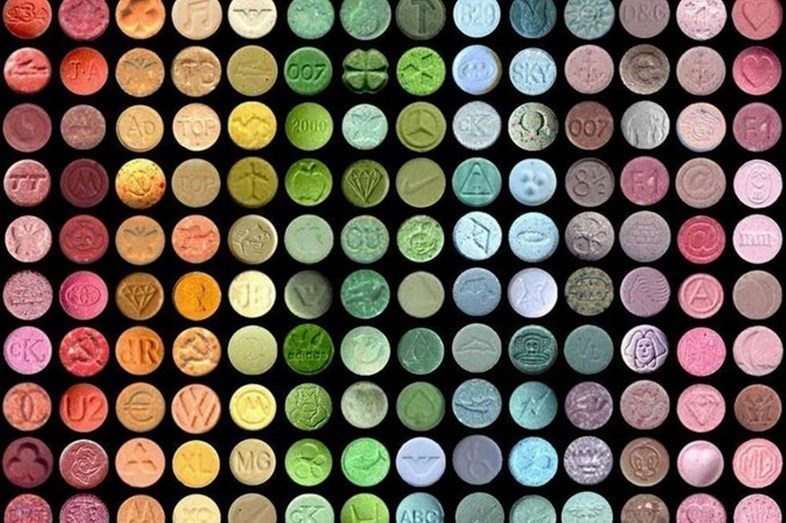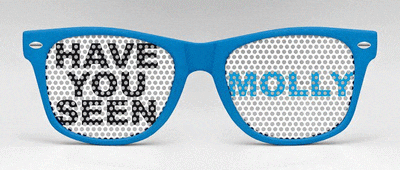8 Things You Should Know About “Molly,” or MDMA

Beyond alcohol, weed, and cocaine, MDMA or “Molly” is one of the more prevalent party drugs used both in straight and gay communities. This substance is sought after for effects that include temporary euphoria, increased empathy, heightened sensations, and for some, hallucinations. Popular among ravers, circuit queens, and clubbers, this drug is linked to events and environments involving music and light shows.
Whether you personally use MDMA during your weekends out, save it for special occasions such as large circuit events or music festivals, or you have friends who use MDMA for partying, it is useful to know the facts when it comes to the consumption of this drug. Here are 8 facts you should know about “Molly,” or MDMA.

1. MDMA has both psychedelic and stimulant-like properties
The fact that MDMA shares both of these properties makes the drug especially difficult to classify. Most resources do not label it as a stimulant, amphetamine, or psychedelic exclusively, but rather they note that MDMA shares properties unique to all three. Most government forums report that MDMA has more mild hallucinogenic effects compared to LSD or psychedelic mushrooms. However, similar to cocaine and methamphetamine, this drug also induces intense surges of energy, reflective of it’s stimulant-like properties

2. It is being used for PTSD therapy
Although studies on the effects of MDMA therapy on patients who experience Post-Traumatic Stress Disorder have been underway for several years now, recent statistics suggest that 83% of participants receiving MDMA-assisted psychotherapy no longer met the criteria for PTSD. In other words, when paired with methods of psychotherapy, MDMA has proven to be 83% successful in significantly reducing the symptoms of PTSD. A prescription form of the drug has not yet been approved by the FDA, but clinical trials continue to support the fact that MDMA can have significant positive effects on reducing negative PTSD symptoms.

3. Not all MDMA is created equal
We will cover the distinction between pressed pills and “molly” later, however it is important to note that MDMA doses come in varying degrees of intensity. Regardless of if you are purchasing capsules with MDMA powder or pressed pills that supposedly contain MDMA, reports indicate that average doses on the streets can contain anywhere between 75-250 milligrams of the active ingredient. This is an incredibly large range of dosages, and considering how powerful the drug is, this variation in strength makes it easy to overdose. Due to the fact that it is a schedule 1 illegal substance in the US, there are no regulatory factories or authorities that measure what goes into these pills. For the average person, the dosage required to produce the desired effects is between 75-100 milligrams. For those who are new to the drug or have no built-up tolerance, taking double this amount (or even more depending on how many pills the user takes) can, in some cases, be lethal.
4. “Molly” (MDMA) and Ecstasy are not the same
This might be a more obvious fact for those who are more familiar with the drug, but it is an invaluable distinction that can help us be conscious of what we are putting into our bodies.
Molly (MDMA)
Molly refers to the drug in its purest form, methylenedioxy-methamphetamine. These usually come in the form of pill capsules (containing the MDMA powder, only).
Moonrocks
Moonrocks also refer to the drug in its purest form, however, they appear as crystallized rocks. This is because they have not yet been crushed up into a powder. These also usually come in the form of capsules that contain these small rocks
Ecstasy
Ecstasy refers to pressed pills that contain MDMA mixed with other ingredients. These other ingredients can include a range of both active and inactive substances, sometimes containing flour, baking soda, cocaine, methamphetamine, heroin, and caffeine. It is more difficult to know what you are putting into your body when you ingest ecstasy.
Powder MDMA
Powder MDMA is simply the drug in powder form, not contained in pressed pills or capsules. This can be snorted, or put into capsules and taken orally.

5. MDMA is a derivative of methamphetamine
Although MDMA is chemically slightly different, it’s overall makeup is extremely similar to methamphetamine. Both substances are part of the amphetamine stimulant family, although slight differences in MDMA account for the hallucinogenic properties this substance has that is not present (to the same degree) in methamphetamine alone. However, both substances do share some similar side effects such as an increase in alertness, reduction in hunger, and an increase in overall body temperature.
6. MDMA decreases the effects of Antidepressants
SSRIs (selective serotonin reuptake inhibitors) such as Prozac and Zoloft are prescription antidepressants used to treat both short-term and chronic depression. They target a neurotransmitter called serotonin, a naturally-produced chemical in the brain known for increasing mood, by reducing the rate at which it is reabsorbed by our brain cells. This results in an overall increase of serotonin utilized by the brain.
MDMA, along with most other drugs that affect mood, disrupts natural brain chemistry by increasing the amount of serotonin released by our brain cells. After the initial overproduction of this neurotransmitter occurs (3-6 hours after ingesting MDMA), our bodies over-compensate by producing less of it. This is why many people feel depressed a day or two after taking MDMA. For individuals with depression, this dip in the production of serotonin can be especially pronounced, causing them to feel more depressed regardless of if they take their antidepressants or not.

7. It can make it harder for men to achieve an erection
MDMA may cause people to feel more connected, aware, and allow them to enjoy their surroundings from an altered perspective, but for men, it often makes it more difficult to achieve and maintain an erection. For both males and females, MDMA is also known to make it more difficult to achieve an orgasm. Oddly enough, this drug is also known for enhancing sexual desire, therefore possibly leaving the user sexually frustrated.
8. MDMA is linked to impaired cognitive processes
Although reports of long-term psychiatric impairments are still rare, research suggests that cognitive impairment and slowed thought processes do sometimes occur as a side effect of MDMA usage. Most of the affected cognitive processes show improvement over time, once the user discontinues ingesting MDMA. However, in some animal studies researchers have found levels of lasting damage to 5-HT systems in the hippocampus, a brain region that is related to memory.
If you liked this article, check out our 8 Things You Didn’t Know about GHB – The Date Rape Drug.
